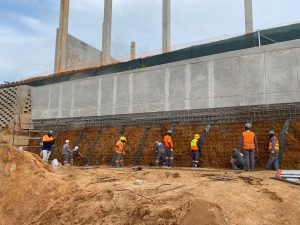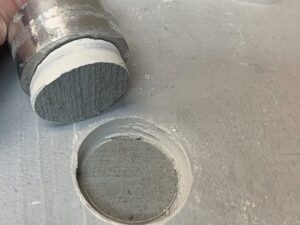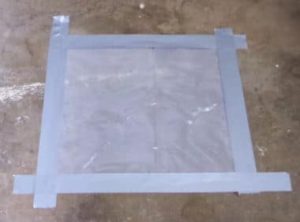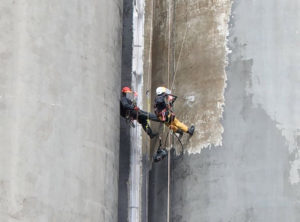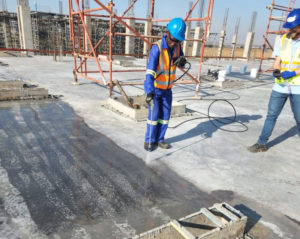By Sheldon White
Our colloidal silica post-placement pozzolan technology differs in form and function from topically applied silicates. Extensive research has demonstrated the differences between colloidal silica post-placement pozzolan technology and these products. The findings, together with the many benefits of colloidal silica post-placement pozzolan technology, have been published in many academic journals.
Colloidal silica post-placement pozzolan
Colloidal silica post-placement pozzolan technology comprises a stable dispersion of amorphous silica nano-sized particles. They consist of a charged nucleus. This charged nucleus is surrounded by an extended diffuse ionic atmosphere. The colloidal state of subdivision consists of particles with a size sufficiently small (≤ 1 μm) not to be affected by gravitational forces. However, they are large enough (≥ 1 nm) to show marked deviations from the properties of true solutions.
Colloidal silica provides best pozzolanic reaction
Notably, colloidal silica post-placement pozzolan provides one of the best sources of the pozzolanic reaction known to man. Colloidal silica post-placement pozzolan technology reacts with calcium hydroxide in the pore space to form secondary calcium silicate hydrate (C-S-H). This action reduces the size of capillary voids and pores in concrete. Colloidal silica post-placement pozzolan technology also produces long chain C-S-H. It is sufficiently more stable than even the “natural” C-S-H formed during the hydration of cement. Colloidal silica post-placement pozzolan technology, therefore, creates a denser and more homogenous structure. This greatly improves the mechanical properties of concrete.
Chemical reactivity of colloidal silica
The chemical reactivity of colloidal silica post-placement pozzolan technology differs significantly to that of conventional topically applied silicates.
Common topically applied silicates consist of Sodium (Na), Potassium (K), or Lithium (Li) that are chemically bonded to silica (Si). Because there is already a cation bound to the silica to form a silicate, the resultant C-S-H formed is a shorter chain morphology. It is unstable in nature and inferior to Portland cement/water-formed C-S-H. Common topically applied silicates also produce potassium, sodium, or lithium hydroxides as by-products. This also negatively impacts the pozzolanic reaction.
Penetrating ability of colloidal silica
The penetrating ability of colloidal silica post-placement pozzolan technology is also superior.
Common topically applied silicates react and harden typically in only the top 1 to 3 mm of conventional concrete surfaces. Because of its small particle size and dispersion package, colloidal silica post-placement pozzolan technology penetrates deeply into the concrete. The depth at which colloidal silica post-placement pozzolan technology penetrates concrete is usually in excess of 50mm. This provides a long-lasting and resilient reaction product that fills capillary voids to provide the many benefits associated with colloidal silica post-placement pozzolan technology.
| Na, Ki and Li silicates | Colloidal silica post-placement pozzolan | |
| Deep penetration – more than 25,4mm | No | Yes |
| Deleterious reaction products | Yes | No |
| Stabe long-chain C-S-H development | No | Yes |
| Extensive academic literature demonstrating hardened concrete improvements | No | Yes |


